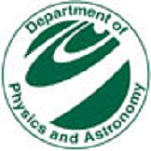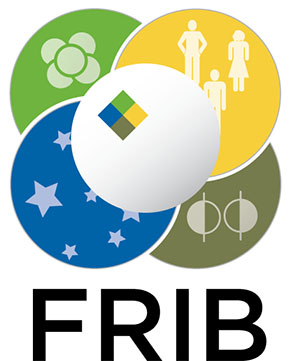
Links:
Atomic nuclei play an important role in the evolution of matter in our universe. For many problems in astrophysics, cosmology, and particle physics, the detailed properties of atomic nuclei provide essential inputs to the solutions.
Our group's research focuses on studying nuclei experimentally to probe fundamental questions about our universe. For example, we measure nuclear reactions, decays, and masses in the laboratory to learn about the reactions that power exploding stars or affect their synthesis of chemical elements. Similar experiments can contribute to searches for physics beyond the standard model of particle physics. In some cases we can use these low energy nuclear physics techniques to directly measure the reactions that occur in stars or to directly search for new physics.
Our program at FRIB is currently focused on measuring the beta decays of proton-rich nuclides. With these experiments, we hope to constrain the nuclear structure details that are most influential on the explosive burning of hydrogen on the surfaces of accreting compact stars such as white dwarfs and neutron stars. Additionally, these experiments can allow us to better constrain the effects of isospin-symmetry breaking in nuclei on tests of the unitarity of the Cabibbo-Kobayashi-Maskawa matrix, a cornerstone of the standard model.
Students in our group have opportunities to propose, prepare, execute, analyze, and interpret nuclear -physics experiments at NSCL, to publish the results in leading scientific journals, and to present the results at national and international conferences.
Selected Instrumentation and Methods Publications:
Time Projection Chamber for GADGET II, R. Mahajan, T. Wheeler, E. Pollacco, C. Wrede et al., arxiv:2401.01904
First application of Markov Chain Monte Carlo-based Bayesian data analysis to the Doppler-Shift Attenuation Method, L. J. Sun, C. Fry, B. Davids, N. Esker, C. Wrede et al., Phys. Lett. B 839, 137801 (2023)
GADGET: a Gaseous Detector with Germanium Tagging, M. Friedman, D. Perez-Loureiro, L. Pollacco, T. Budner, C. Wrede et al., Nucl. Instrum. Methods Phys. Res., Sect. A 940, 93 (2019)
Doppler Broadening in 20Mg(β p γ)19Ne Decay, B. E. Glassman, D. Perez-Loureiro, C. Wrede et al., Phys. Rev. C 99, 065801 (2019)
Design of SECAR: a recoil mass separator for astrophysical capture reactions with radioactive beams, G. P. A. Berg et al., Nucl. Instrum. Methods Phys. Res., Sect. A 877, 87 (2018)
Observation of Doppler broadening in beta delayed proton-gamma decay, S. B. Schwartz, C. Wrede, et al., Phys. Rev. C 92, 031302(R) (2015)
Preparation of 114mIn low energy conversion electron sources, C. Wrede et al., Nucl. Instrum. Methods Phys. Res., Sect. B 269, 1113 (2011)
A high-intensity source of 6He atoms for fundamental research, A. Knecht et al., Nucl. Instrum. Methods Phys. Res., Sect. A 660, 43 (2011)
Preparation of 20Ne, 24Mg, 28Si, 32S, and 36Ar targets by ion implantation into thin carbon foils, C. Wrede et al., Nucl. Instrum. Methods Phys. Res., Sect. B 268, 23 (2010)
Properties of 23Na implanted targets, T. A. D. Brown et al., Nucl. Instrum. Methods Phys. Res., Sect. B 267, 3302 (2009)
Commissioning the DRAGON facility at ISAC, S. Engel et al., Nucl. Instrum. Methods Phys. Res., Sect. A 553, 491 (2005)
Energy loss around the stopping power maximum of Ne, Mg and Na ions in hydrogen gas, U. Greife et al., Nucl. Instrum. Methods Phys. Res., Sect. B 217, 1 (2004)
The DRAGON facility for nuclear astrophysics at TRIUMF-ISAC: design, construction and operation, D. A. Hutcheon et al., Nucl. Instrum. Methods Phys. Res., Sect. A 498, 190 (2003)
A double sided silicon strip detector as a DRAGON end detector, C. Wrede et al., Nucl. Instrum. Methods Phys. Res., Sect. B 204, 619 (2003)

